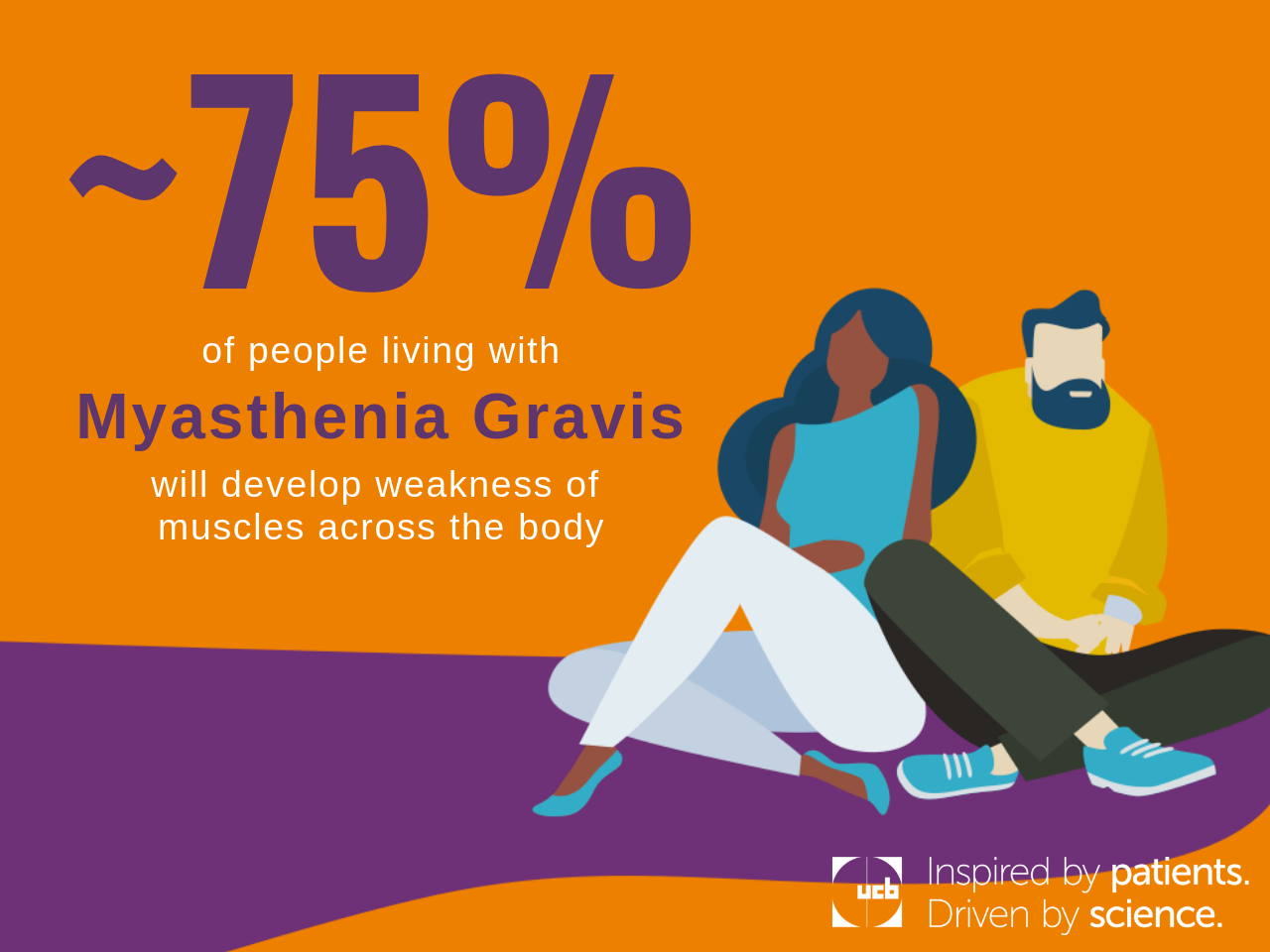
At UCB, how we do science – from discovery to development to delivery – has been transformed and redesigned around understanding the patient and their individual experience. For specific patient populations new to UCB – like Myasthenia gravis (MG) – this is especially important because no two experiences of this rare, neuromuscular condition are alike. In honor of Myasthenia Gravis Awareness Month, join us as we shine a spotlight to help spread awareness and empower people living with MG.
What is Myasthenia Gravis? Myasthenia gravis is a chronic, autoimmune, neuromuscular condition where the body’s immune system mistakenly targets the connection between the nerves and the muscles. It is rare – affecting about 10 of every 100,000 people.
What are the symptoms of MG? In people living with MG, voluntary muscles don’t respond well to the signals sent by the brain. The main symptoms are extreme muscle weakness and fatigue. The actual symptoms of MG vary greatly, so individuals experience MG in a very personal way, which can cause profound uncertainty. Symptoms of MG are unpredictable and can fluctuate over days or even hours.
In approximately 65% of people, the first signs of MG are problems with the eyes, such as double vision or drooping eyelids. About 75% of people will develop more generalized weakness of muscles across the body. Symptoms and disease severity tend to be worst and fluctuate more within the first 3 years.
On rare occasions, muscle weakness can be life-threatening. Between 15 to 20% of people with MG will experience a myasthenic crisis, which can lead to problems swallowing and respiratory failure.
How does MG impact patients? Some patients call MG the ‘snowflake disease,’ because no two experiences of this rare, neuromuscular condition are alike. People living with MG report relying heavily on family and other caregivers. It can interfere with people’s family and work life and their ability to do exercise and function in general. Oftentimes, MG can leave people living with the condition feeling isolated.
Every patient experiences this variable and unpredictable disease in a unique way. Because MG plays differently for everyone, people living with MG around the world co-created a new campaign, called My Groove, to share songs and knowledge about the condition. My Groove emphasizes how music can help support people living with MG and be a way to bring people together. All the music shared on social media using the hashtag #MyGroove will be collated into a public playlist.
UCB is proud to be a part of helping to raise awareness about MG. We’re committed to involving patients living with this disease along our discovery, development, and delivery continuum, including supporting campaigns like My Groove to encourage patients to share their experience.
Learn more about My Groove.
Source: https://www.ucb.com/_up/ucb_com_patients/documents/280519_MG_Infographic_FINAL2.pdf
Choose Country
- Global Site – English
- Australia – English
- België – Engels
- Belgique – Anglais
- Brasil – Português
- България – Български
- Canada – English
- Canada – Français
- 中国 – 中文
- Česká Republika – Angličtina
- Danmark – Engelsk
- Deutschland – Deutsch
- France – Français
- España – Español
- Ελλάδα – Ελληνικά
- India – English
- Ireland – English
- Italia – Inglese
- 日本 – 日本語
- Казахстан – ағылшын тілі
- 한국 – 한국어
- Luxembourg – Anglais
- Luxemburg – Engels
- Magyarország – Angol
- México & Latinoamérica – Español
- Nederland – Engels
- New Zeeland – English
- Norge – Engelsk
- Österreich – Deutsch
- Polska – Polski
- Portugal – Inglês
- România – Engleză
- Россия – Русский
- Slovensko – Anglický
- Suomi – Englanti
- Sverige – Engelska
- Schweiz – Deutsch
- Suisse – Français
- Türkiye – Türkçe
- Україна – Англійська
- United Kingdom – English
- U.S.A. – English



